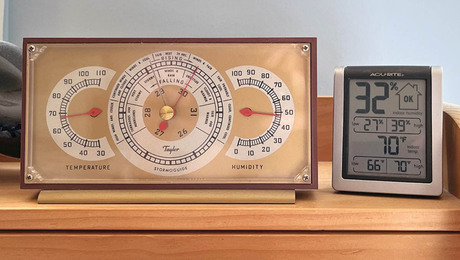Solving Drywall Room Acoustics with HardiePlank?
Ever enter an empty room, and notice how poor the interior acoustics are? That’s what you get whan all six faces are made of a hard, reflective material like drywall.
I recall having visited a university ‘sound lab,’ where the walls were also hard, but were faced with all manner of angles- anythig to break up reflections, and to avoid the 90 degree connections we’re used to having.
These days, I’m doing a complete-gut remodel of my home. For a number of reasons, I like foam insulation. The issue is that foam burns- way too well- so you want to protect it with something like drywall.
Drywall, or masonry. Something ilke cement board. Even Hardie-plank.
Hold on- did I just say ‘Hardieplank?’ As in ‘house siding?’ Say what you will, but those slight angles just might help with the acoustics. Might be especially handy in places like the bathroom or the laundry room, where ‘fine music’ is rarely made.
I’d appreciate your thoughts on this idea.


















Replies
Well, the sound-absorbing rooms I was in a few times at my old plant had open-cell foam in those muslin-covered pyramid-shaped thingies on the walls, not a hard surface. And, while the angles of standard siding would break up the sound a bit (possibly improving acoustics/"softening" echos for a recording studio, eg), there's not enough angle there to help "absorb" sound to any substantial degree.
But you're on the right track. Anything to make the surface irregular will help.
Amish
While the angles will break up the waves, they will still bounce around. You put a bunch of people (or noise sources in there) and it might seem like you're sitting in one of those high ceilinged, avant garde, warehouse style restaurants.
Soft is the key-hard reflects-that's why mass is so important in blocking sound from entering a room.
The sound booths we worked on 30 yrs ago at a radio station had all sorts of soft gaskets between the double jambs of windows and doors. The room itself was full of soft material-cloth covered sound deadening board (homasote) on the walls, cloth covered furniture, cloth covered panels held off the walls and ceiling-the idea was to devide the sound and absorb it.
If you like the look-take a bunch of homasote, lay that up like lap siding (big wide exposure) - put some 1/2" drywall J-channel on the bottom to trim the ragged edge and paint that...............
One thing you can do is space your siding pieces out somehow so that the sound can get behind them. One option would be to put the planks on furring, with maybe 1/2" gaps between them, and something (maybe the Homosote) behind. But of course, this becomes a dust/spider magnet.
I appreciate the feedback. It will be some time before I am ready to do any interior finishes, so I'm thinking things through.
My (working) visits to the sound labs were most educational. They had two different types of testing rooms: the "anechoic" and the "reverberant" types. The was filled with soft foam wedges, and the other had very oddly shaped concrete walls, floor, and ceiling.
Oddly enough - I saw it proven in person - decible readings of the same source were identical in either room. It appears that the 'reverberant' room had those angles to prevent the room from focusing the sound in some areas and cancelling it in others. I was given, as an example, what would happen were the room elliptical: a whisper at one of the focus points would be clear at the other end - but not heard or understood elsewhere in the room.
"Acoustics" can mean a lot of things- it helps to first state what you wish to accomplish. For this application, I am trying to preserve the clarity of sound .... so, perhaps, I could clearly hear a radio set at a modest volume, throughout the room. (Ever notice on job siteshow music sounds poor, no matter how you crank the volume? That's bad acoustics at work).
My 'friends' at the lab gave me the following 'basic' rules:
1) Avoid right angles;
2) Avoid parallel surfaces;
3) Have a soft surface opposite a hard one; and,
4) Don't forget about 'background' noise.
While we can get away with a lot, relying upon our drapes and furnishings to cover for our errors .... there's something to be said for good design.
I suspect that acoustics are part of the reason folks like 'cathedral' ceilings so much.